A Finnish entrepreneur, John Ujanen, applied the paradoxes of octagonal geometry and built a super-efficient octagonal house out of aspen timber.
Who among us doesn't dream of having a vacation home, a summer cottage in the country, a hunting lodge or a winter sports cabin? It's so wonderful to come home from skiing and sit by a fire in the hearth! This is the place to go to get away from the daily routine and spend time in pleasant relaxation.
It is surprising how thoughts of recreation make us work even harder! Once, a man stepped out of a dream and started building his dream house.
John Ujanen also had a dream. But unlike those who would be perfectly content with a house with four walls and a roof, he wanted something more: an octagonal house made of plop trembling.
The Octagon
The idea of the octagonal format is not new: we can see examples of octagonal churches and temples not only in Europe but also in Asia, where the number 8 is associated with the endless, or immortality.
However, the real popularity of the octagonal format for dwelling houses in America came in the mid-19th century. It is linked to the name of Orson Fowler, a scientist and lecturer, who built such a house for his family and named it the Octagon, then wrote a book, "The Octagon House: A House for All, or a New, Cheap, Convenient and Superior Mode of Construction". The book was first printed in 1848, and over the next half century octagonal design became fashionable, and not just aesthetically.
As you can see from the picture, compared to a square, the octagon encloses about 20% more space with the same perimeter. This means that, in the same square meters of wall, a house of this type contains more living space and requires less heating per square meter. Fowler has calculated that an octagonal house is cheaper to build, allows for extra living space, gets more natural light, is easier to heat and stays cool in summer. All these benefits derive from the geometry of the octagon: the shape effectively encloses the space, minimizing the area of the exterior surfaces and therefore heat loss. The octagon comes closest to a circle, which is actually the most efficient shape, but it is difficult to construct and hard to find the right furniture for inside a sphere.
"In the beginning it was only the octagonal dream"
Well, John Ujanen dreamed and dreamed ... and then he built what he wanted. His octagonal holiday cottage, about 120 square meters in size, is located in the center of a small island on a beautiful lake that he owns, along with the surrounding land. The house may not necessarily be very tall, but even so, its unique location and grand presence make it seem like a lighthouse or watchtower, controlling the nearby sea in all directions.
The house is built of aspen half-timbering. This style of construction is very popular in Finland. The logs are cut into half-timbers and the joints are made of 'Norwegian knots'. The half-timbered log house looks so strong and so pretty that it doesn't need any exterior paneling.
Usually the half-timbers are made from northern pine, but John decided to make them from his own aspen logs, an excellent wood, light yellow in color with a greenish tinge, a reliable, dense, crack-free, easy to work, and reliable.
The only important rule is that the half-rounds must have ideally flat cut surfaces with geometric accuracy.
How to get the ideal half-grain
Being a true perfectionist in all things technical, keen to get everything just right - exactly right, not almost right - John wanted a special saw to help him get the best possible finish on his grand aspen logs, and the Wood-Mizer LT15 gave him just that: it gave him the flawless finish he wanted - thanks to the bandsaw's precision saw blades and excellent handling.
But all this turned out to be just an overture. A few years later, there was a very determined knock at the door of the Wood-Mizer representative in Finland. On opening the door, Mr. Ujanen appeared in the doorway with a peculiar twinkle in his eye.
"I'd like to buy one," said John, "one of these saws of yours, the same kind of ribbon saw that I used on those poplar logs for my vacation cottage". Typical John, a man who doesn't waste much time talking.
"Well, all right, then, very well!" replied the Wood-Mizer representative, who was probably closing the fastest sale of his life. "What are you going to do, my friend?"
"I plan to build a bigger house, much bigger in fact, to be my permanent residence. And this house will also be octagonal and still made of massive poplar logs. So the best possible precision and excellent finish are absolutely essential to the success of the project."
And so John, a man accustomed to turning his dreams into reality (at least most of them), is on the verge of finalizing his home project as we speak. What John's "Villa Aspen" looks like, you can see in the photos - not the most common home design you might see, right?
"Well, how did you like LT15 this time, John? Happy with the results?"
"Perfectly content, I'm happy to say. Very often you have to be prepared to give in and accept some compromises - one thing may be okay, another - not as good. So you have to settle for some kind of relative balance. But not LT15. The bandsaw has proven itself to be a very well balanced combination of lightness, speed, accuracy and safe handling, all of which make it a very reliable tool for achieving the results and standards you want, for the exceptional finish you want. Any builder, I think, would think very highly of such competence and performance."
Adapted after Martti Kirsitie
More success stories and business ideas related to timber production can be found at
http://www.woodmizer.ro























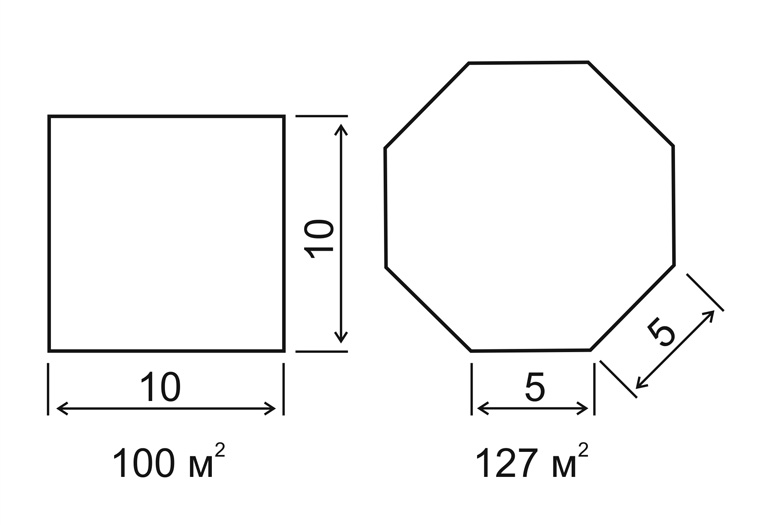

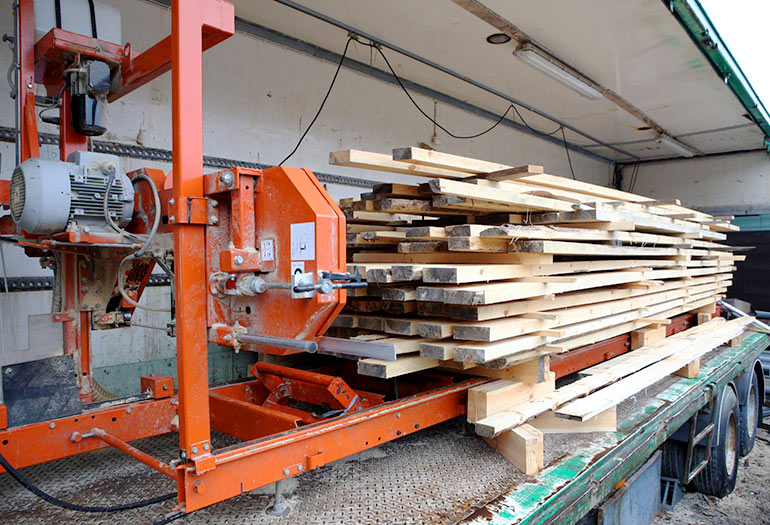
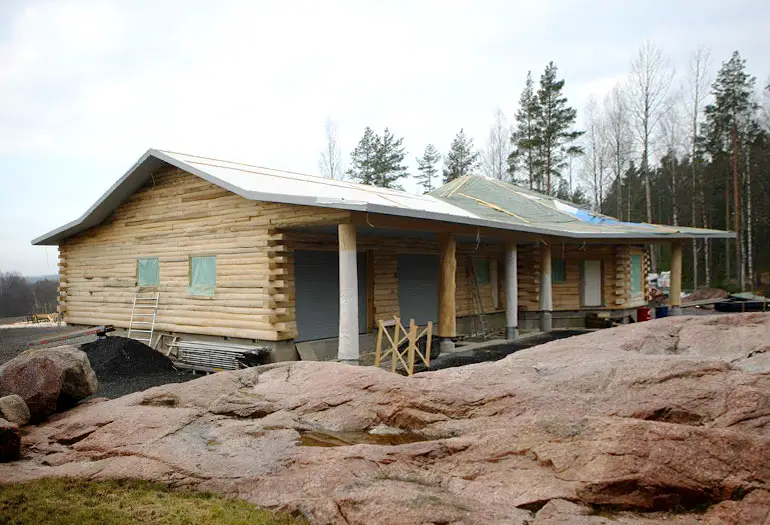


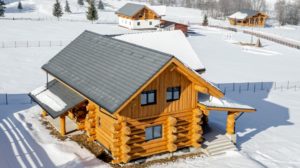
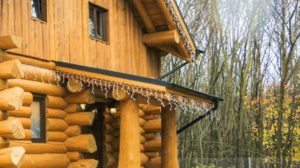

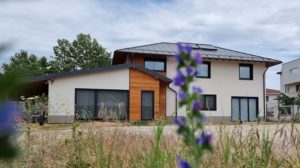
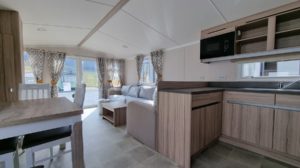

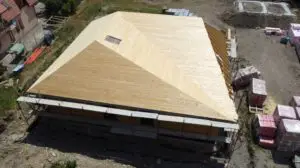



I don't understand, there is no compartmentalization?
If you take a good look at the wiring, you will also see the future subdivision.
It is. It doesn't show us. It's a house. It can't all be a pile.
"in the same square metres of wall, a house of this type comprises more living space and requires less heating per square metre"
Totally wrong! The heating requirement is given by the volume not the surface area.
"an octagonal house is cheaper to build, allows extra living space, gets more natural light, is easier to heat and keeps cool in summer"
Aberrations! If the same perimeter has a larger covered area, it does not mean that costs are reduced, but on the contrary. Natural light has nothing to do with the shape of the house but only with the number and area of windows. Heat transfer is not given by the shape but by the materials used.
"All these benefits derive from the geometry of the octagon: the shape effectively encloses the space, minimising the area of the external surfaces and therefore heat loss"
For any general school graduate, two surfaces with equal sides (perimeter and height) are equal. Again heat loss has nothing to do with the shape of the house.
Conclusion? An execrable article just to advertise Wood-Mizer.
Absolutely agree.